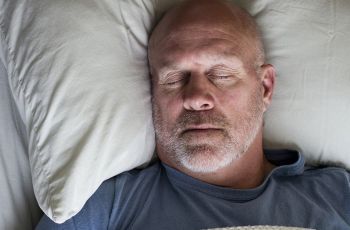Warmer months bring outdoor events, including cookouts, campfires, and fireworks displays, but they also bring the risk of burns. Thermal burns, or skin injuries caused by an external heat source, such as a hot grill or a flame, are common – and painful. Robert Shesser, MD, MPH, chair and professor of the Department of Emergency Medicine at the George Washington University (GW) School of Medicine and Health Sciences, explains how to treat minor burns and when to seek care.
Q. What kind of burns are common during summer months?
Shesser: Let’s start with fireworks. They’re totally and completely dangerous; using them is just asking for trouble. They can cause serious eye injuries, but if people are holding the firework when it goes off, there are going to be hand injuries too.
Q. How should you treat a burn?
Shesser: Treating burns is pretty simple: irrigate with something cool and cold; tap water is fine. This will lower the temperature and stop ongoing injury. The treatment after that depends on the extent, severity, and location of the burn.
With thermal burns, there could be blisters, which we generally say to leave intact, unless they are impeding motion. You can always cover the wound with some no-stick gauze or wrap it in plain cotton gauze.
Q. What kind of medication can you use to help avoid infections?
Shesser: If the skin is gone and you see the subcutaneous tissue, then you can put some topical antibiotics on it. The danger is infection. Once you lose the the epidermis, which is the outermost skin layer, you lose a lot of protection against skin bacteria and it's very easy for the burn to become infected.
It's common to have a little redness around the periphery of a burn that no longer has the epidermis. Sometimes that redness doesn't indicate infection. When you get a burn, there's going to be some inflammation and release of substances that cause inflammation.
Q. How serious is a burn?
Shesser: The body will heal itself unless the skin is totally dead, and most burns don't go that deep because your skin has several layers that regenerate new skin. When all of the layers are destroyed, the wound will heal with a bad scar. Those are the people who need skin grafts.
Burns that are going to occur in residential settings are going to be small and not what we call full thickness, which means that the body is going to heal itself, it just won't heal itself in the presence of any infection. That's why we use antibiotic ointment or an oral antibiotic several days later if there’s any redness.
Q. Which areas of the body would require you to seek help if you’ve been burned?
Shesser: I would say the face, hands, feet, and genitalia. Get some ice, get some water, get some Tylenol, and then figure out what's needed next.
Q. What pain level should you expect with a burn?
Shesser: Pain is to be expected after a burn. If you have one, it's going to hurt. Start with Tylenol for it; normal-sized adults can take two extra strength Tylenol, and children can have 15 milligrams per kilogram. Assuming you don't have kidney disease or a history of bleeding ulcers, you could add some ibuprofen (Motrin).
If you stagger your schedule, you can alternate Tylenol and Motrin and take some pain reliever every three hours. I would recommend starting early to get on top of it. The nerve endings are where the skin is gone, and they are going to be painful.
You can keep some ice on it for a while to try and decrease the amount of edema. There's going to be swelling in the area around the burn; cells are damaged, and those damaged cells release inflammatory mediators, which bring more blood supply to the area. That reaction is good in the long run, but in the short run, it creates some swelling or edema, which works against healing. So, keeping a burn on an extremity iced and elevated for the first 24-36 hours is good.
Q. How long does it take for a burn to heal?
Shesser: Kids heal very quickly, in a matter of a day or two. For adults, depending on the size and location, it could take a week or 10 days. When it comes to blisters, the covering of the outer part of it is dead skin, which it's going to disappear eventually. A lot of the time, when patients come into the emergency department with pretty big blisters, we do what’s called a debridement. That's just a fancy word for removing any dead tissue to allow the living tissue to heal faster. The presence of dead tissue creates the potential for infection and delays healing.
It’s also fine to put a dressing on the blister, and you can get those at the pharmacy. Wrap it, keep it covered, and run it under water to clean it. As the tissue dies, the waterjet itself will clean up the area.
Q. Do you need to go to the emergency room for a burn?
Shesser: A lot of visits could be managed with telehealth if somebody is unsure about what to do. If you have a very large burn with a significant amount of dead skin, you'll want to go to the hospital, but most burns are going to be minor and you won’t need to go to the hospital.
For immediate care concerns, visit one of our GW Immediate & Primary Care locations.




